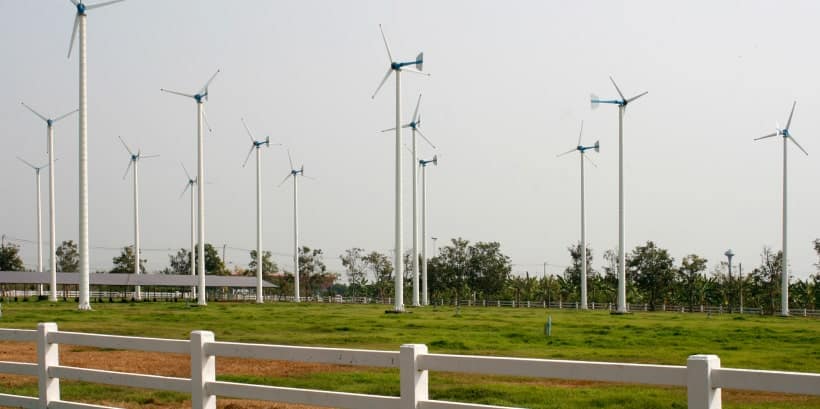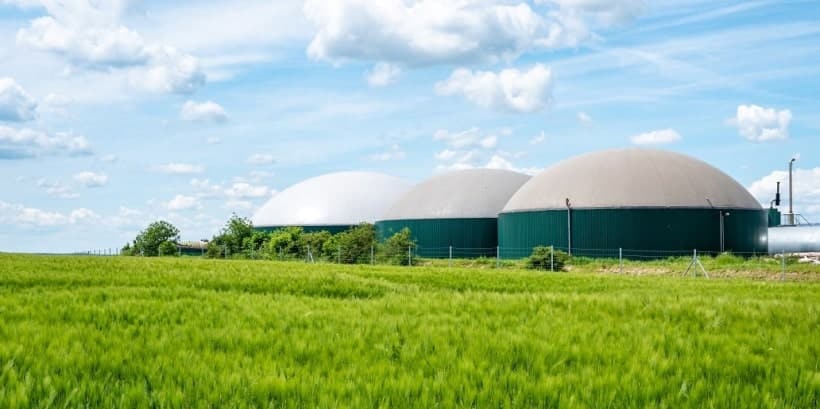Today’s rising pollution significantly influences soil quality and texture in urban and rural areas. The growing demand for conventional energy resources like fossil fuels and natural gas is one of the primary reasons behind the rise in pollution. Furthermore, this high demand can also lead to exhaustion of these non-renewable energy resources very soon. Consequently, we must start protecting natural resources while using them to their fullest potential.
Off-grid energy solutions are the most viable alternatives to fossil fuels like coal and petroleum. But how can they help protect natural resources?
By presenting with these best off-grid energy solutions, we can assist you to preserve your town’s natural beauty while providing excellent electricity-generating options.
Table of Contents
What Does Off-Grid Energy Solutions Mean?
Off-grid energy solutions use alternative energy sources to power structures that are not connected to the conventional electrical grid.
You must reserve your rural land beautifully covered with splendid flora and fauna in its natural form. Therefore, off-grid power options will benefit the environment and help minimize climate change’s effects.
The seven best sustainable and cost-effective solutions for rural land are:
Solar Power System
Solar power systems make excellent off-grid energy solutions for land because they aren’t directly connected to the primary power grid. Mounting the panels in a suitable spot to receive sunlight, typically from the south or southwest, is all that is needed.
As people are learning about benefits of non-conventional energy resources for environment, the demand for solar power systems is growing exponentially. Thus, farmland investment to install solar panels is a promising venture today in terms of significant ROI.
The solar power system comprises a solar panel, a charger controller, batteries, and an inverter. The solar panels on the ground collect solar energy and convert it into DC electricity.
The charger controller regulates the flow of electricity from the panels to the batteries. The batteries store the electricity in form of DC energy. They also assist in supplying power to the inverter. Following this, the inverter transforms the DC energy into AC energy, which is used as electricity for various purposes.
Micro-Hydro Electricity System
A land with utilize this a reliable and sufficient water source can fantastic off-grid energy solution to generate electricity and use it to accomplish various daily chores and practices.
To build this hydropower system, you need a moving water conveyance system, a turbine, an alternator or generator, a regulator, and wiring. Efficient energy production depends on finding a place with good head and flow.
The system pumps water through a turbine to power an electric generator, which produces electricity that can be stored and used eventually.
Unlike conventional energy resources, micro-hydro electricity systems do not rely on coal and petroleum consumption. This helps consumers in saving a great deal of money as electricity bill and preserve natural resources for the long run. Thus, micro-hydro electricity is one of best off-grid power sources for today.
Wind Turbine System
Different factors, such as climate, vegetation, and land topography, affect airflow in varying ways. Therefore, one of the most effective ways to utilize renewable energy is by generating electricity from flowing wind.
The wind turbine converts the energy of the wind into electricity using aerodynamic force. As the wind blows across the blades’ two sides of the blades, it creates a difference in air pressure, resulting in the production of lift and drag.
The rotor starts spinning when the lift force exceeds the drag force. A shaft and a set of gears connect the rotor to the generator. As the rotation speeds up, the force is converted into energy, which produces electricity.
This working makes it evident that a wind turbine system can be a go-to off grid energy solution in windward areas like mountain foothills or beaches. To invest in growing demand in wind turbine systems you can explore and buy suitable lands at best prices with us at APXN Property.
Biogas System
Generating electricity from biogas plants is a good choice among all off-grid energy solutions. Biogas plants utilize daily waste materials like vegetable waste, animal dung, and much more daily trash. It also provides an excellent solution for organic waste management.
The biomass is combined with water in the biogas tank to create a slurry mixture. This is then introduced into the digester. It is an environment devoid of oxygen where the presence of microorganisms aids in the breakdown process.
This process produces gasses like methane, hydrogen, carbon dioxide, and hydrogen sulfide, essential components of the complex chemical. The gasses produced are stored in various tanks and can be used as fuel for gas stoves and engines.
Geothermal Heat Pump Energy System
The geothermal heat pump energy system is a sustainable option among all the off-grid solutions. It can help quickly overcome the challenges of obtaining warm water and cooling rooms in rural locations.
Utilizing the sustainable geothermal heat system as a solution provides an efficient way to heat and cool buildings while operating off-grid. Thus, buying land to set up GHP plant can help generate great returns in the future.
The GHP system has three components which are:
Ground Loop
The GHP process starts by embedding the pipes in the ground or planting them into a nearby local water supply. During hot weather, the heat unit pump starts circulating hot fluid via the pipes, which is reversed during winter.
The Heat Pump Unit
The pump centralizes heat from the fluid to a higher temperature while the refrigeration cycle produces cold. Conversely, the fluid in the ground loop receives heat from the structure, which cools the surrounding region.
Air Distribution System
The system disperses heated or cooled air throughout the building, providing a comfortable and controlled temperature. Thus, it acts as a cost efficient and convenient off-grid power solution.
Microgrid Systems
A microgrid system produces and distributes electricity independently or in coordination with a traditional grid. It is a smaller version of a centralized power system that can operate sustainably and autonomously. Furthermore, it provides power to a specific community, building, or business, marking it a great option on rural land.
The system starts with a power source, a conventional source such as diesel generators, or a renewable energy source like solar, wind, or hydropower. Following this, the system then stores the energy in batteries or other energy storage devices to ensure a steady electricity supply.
This stored energy is later used to power industrial and household gadgets as an alternative to main-grid power. Thus, a micro-grid solution acts as a pocket-friendly and convenient off-grid energy solution.
Energy-Efficient Appliances and LED Lighting Systems
Energy-efficient appliances and LED lighting systems are becoming the preferred and efficient choices for generating electricity in off-grid areas. These devices and lighting setups consume less energy than conventional ones, making them ideal as off-grid power solutions for locations with limited or expensive electricity.
Renewable energy sources such as solar or wind power can be combined with energy-efficient appliances like refrigerators, air conditioners, and LED lighting systems. This will lower dependence on traditional incandescent or fluorescent bulbs. This will reduce the amount of energy needed to power a home or business significantly. Thus it will become a viable and cost-effective option for generating electricity in rural areas with off-grid energy solutions.
Conclusion
Off-grid energy solutions are available to rural landowners to create electricity cost-effectively and sustainably. These solutions compete favorably with traditional energy sources and have improved effectiveness, dependability, and affordability.
Selecting the best energy solution for your needs depends on your location, energy needs, and financial constraints. By investing in these off-grid energy options, rural landowners can increase their level of self-sufficiency, lower their carbon footprint and gain access to reliable electricity.













